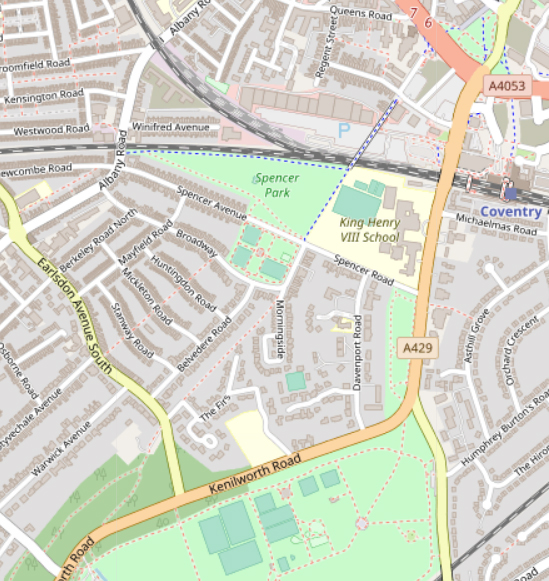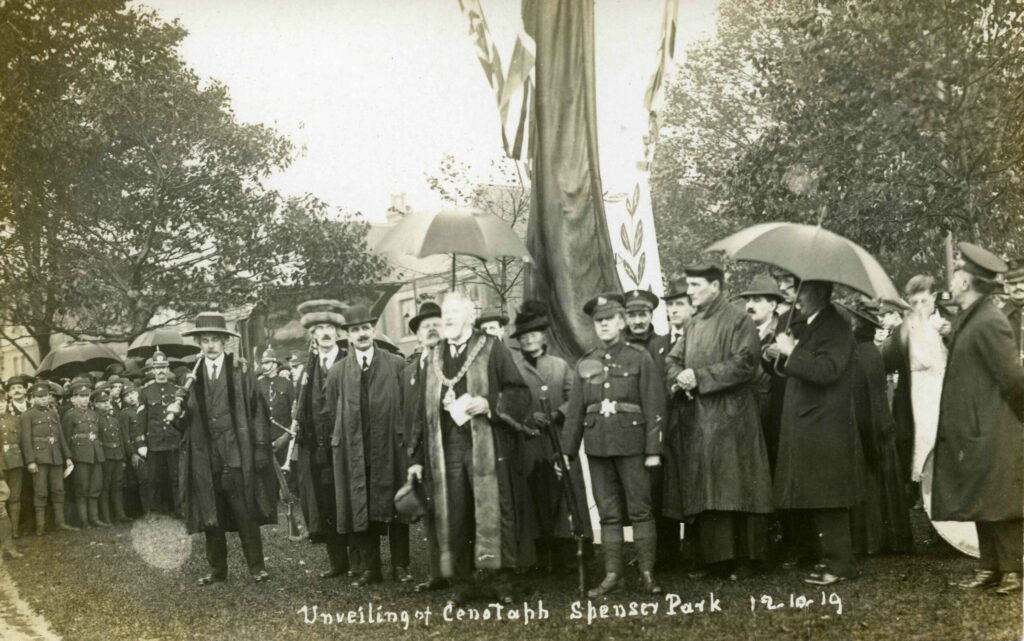
Today we have the ninth episode of Peter Walter’s series of lockdown walks “being a compendium of idle facts, hidden places and meaningless historiana gathered on walks within easy striding distance of the writer’s abode – and beyond”.
Gone are the William and Mary cottages and the toll gate that stood nearby, but the original route of the road from Kenilworth is still there to be walked as it hurries into the centre of Coventry from Earlsdon.
It’s a broad footpath now, running between the back gardens of Belvedere Road and Morningside, fragrant with clematis and bright with laburnum and rhododendron blossom that reaches over forbidding brick walls and stout security fencing.
Further on, the tennis courts in Spencer Park are silent in lockdown. Here, on another sunny day more than a hundred years ago, a photographer took a picture of some of the first players on these courts, slender young ladies in sweeping hats and long dresses. Must have been tough, going for an overhead smash in all that clobber.
The next landmark on the way into town is an oak tree said to have been nurtured from an acorn picked up on the battlefield at Verdun in 1916. It’s growing on the site of the city’s first, but to much relief all round, temporary Great War Memorial, unveiled on a filthy afternoon in October 1918. There’s a photograph to commemorate those who attended that day too. Drowned rats doesn’t come close.

Anarchy bridge, over the old railway goods yard, hasn’t seemed quite so anarchic since they built a retail park below it, and now the station itself is getting a re-invention, the latest of several since the first one opened in 1838. A paltry affair it was too, for the first city to be connected to London, but that’s another story.
At that time the old road passed through orchards and market gardens on its way down to Greyfriars Green, once waste ground outside the city walls that had been Coventry’s chief dunghill. It had gone somewhat upmarket by the 1830s, when earnest young Mary Anne Evans was a star pupil at a school for young gentlewomen run by the Franklin sisters in the last house on Warwick Row.
Nevertheless, things could still happen on Greyfriars Green that young gentlewomen were never meant to see. In 1819 radicals had held protest meetings there in the wake of the Peterloo Massacre, and at the Coventry Great Fair two years earlier the authorities had had to shoot a bear that had been shaved and tortured and passed off by its owners as the Polo Savage.
In 1849, the year Mary Anne Evans left Coventry to become the great writer George Eliot, an elephant due to lead the Great Fair procession the following day attacked and mortally wounded young William Wombwell, nephew of the menagerie proprietor, in its quarters on the green. Needless to say, that didn’t get into Middlemarch.
